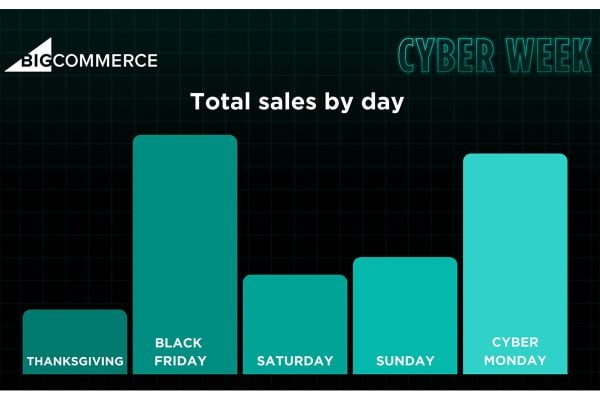Gavin Murphy, Scurri CMO takes a look back at Black Friday and a look forward to the year ahead as he asks: “How did ecommerce fare this Black Friday and what does 2023 have in store?”
A tough year, resulting in a tough Black Friday
While Black Friday has historically been one of the busiest periods of the year for merchants thanks to a spike in internet traffic and sales, this year has shown them that this is not always the case. Unfortunately, the UK’s tumultuous fiscal year is reflected in the slightly underwhelming income intake this year. Nevertheless, IMRG figures show that the overall market increase for this Black Friday was 0.3%.
For many countries, Russia’s war on Ukraine which led to supply chain issues has given way to an economic economic crisis, and the UK is no exception. The cost of living problem is influencing tactics and dialogues for both consumers and merchants. It has a big impact on how people purchase and how businesses make decisions on a wide range of issues. If merchants wish to be proactive and weather the impending storm, which is only going to get worse, they must have a thorough understanding of the problem. This Black Friday was no exception.
What has been trending?
Scurri identified many significant trends this year, including the fact that many businesses started their Christmas sales early in the autumn rather than on Black Friday with doorbuster bargains. This year more Black Friday advertisements ran on Monday November 21st than there were on Black Friday itself according to IMRG, reflecting an increasingly popular practice. Smaller companies and larger multinationals are copying this strategy. Amazon, for example, staged a second Prime Day celebration in October of this year. It’s possible that businesses are presenting strategies that are more customer-focused, recognising that this year’s budgets will be the tightest ever due to rising living expenses, and responding by letting their customers purchase more for less, for longer.
While the inflationary environment, the impact of rising interest rates, and a weakening labour market are placing a squeeze on discretionary spending for many households, there was also concern surrounding the impact of the World Cup as well as strikes. Sales were slightly impacted by the World Cup, but not wholly negatively. In the weeks leading up to the World Cup, the category of beers, wines, and spirits had extraordinary gains of +59.3% in the week commencing November 6 and +48.4% in the following week. Black Friday also marked the biggest day ever for social media platforms, as TikTok, Instagram, and Facebook all saw spikes in purchases during commercial breaks.
The results are in
Black Friday’s overall growth in 2022 was unchanged; however, the 8-day week from November 21–28 witnessed a little increase. While online sales were up 7.4% year over year in the US, shoppers in the UK were predictably more cautious given the macroeconomic environment, according to Criteo’s data from 5,400 merchants. When they went shopping, they concentrated on a few distinct product categories: home and garden, for instance, had a Friday increase of 156% over the norm of 6%. Consumer technology increased by 119%, while fashion increased by 387%, although neither category saw the gains of the previous year. Retailers would have preferred greater growth rates at this stage in the year, but given how difficult the year has been, perhaps flat is not as awful as they thought.
Moving forward – what have we learnt and where do we go?
As the holiday season approaches, the current market does not appear to be especially kind. Over the coming year, the economic prognosis for most of the world appears to be bumpy, and historically, the retail sector has been among the first to experience these difficulties. Even though it saw growth on Black Friday, this is expected to generate more problems for brick-and-mortar stores that are still working to recover from the disruption brought on by the COVID-19 outbreak. To guarantee that clients’ increasingly constrained disposable income continues to flow in their direction, online retailers must innovate constantly.
Much more may be learned from this Black Friday, and businesses may start planning as early as January 2023. Merchants may use this knowledge to find answers to these challenges by keeping track of all the problems they ran into during the peak. Although there was a noticeable slowdown in sales as a result of the cost of living problem, many UK merchants have noticed an increase in their foreign sales; perhaps selling internationally is a fantastic approach to future-proofing your firm.









